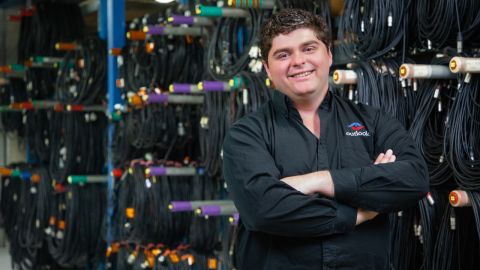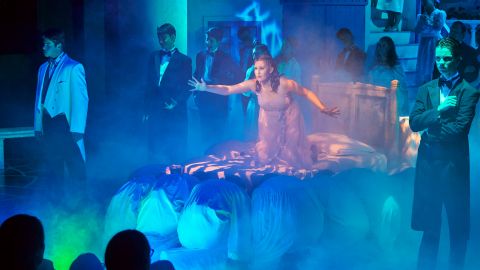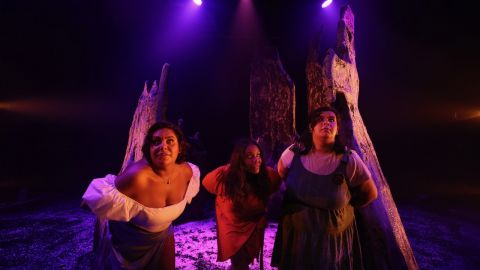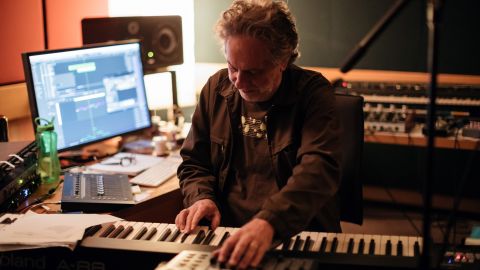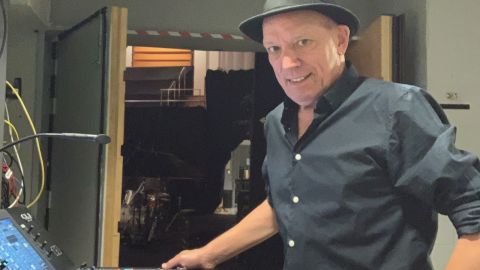VIDEO KILLED THE RADIO MIC.

Remember the famous song Video Killed the Radio Star. Well now Digital TV is about to kill the Radio microphone. Kathryn Inglis from Loud and Clear Audio explains how the introduction of Digital Television poses a big challenge for the performing arts.
Wireless audio devices such as radio microphones use the radio frequency spectrum, typically between about 518mHz and 866mHz. This is the part of the frequency spectrum also used by TV broadcasters. For analogue TV each broadcaster uses a channel incorporating a band of frequencies, and a clear channel is left either side to avoid interference from other broadcast signals. These clear channels are known as white spaces. Up until now wireless audio devices have been able to freely use this white space without causing interference to TV.
Digital TV does not require white space between broadcasting channels. This means Digital TV signals can be broadcast on adjacent channels or frequencies, allowing white space to be reallocated. When we finally go completely digital this means less “white space” for users other than DTV (more free to air channels) and the white spaces will be opened up for use of other “white space devices” (WSD).
In the US, where the switch from analogue to digital TV will occur first (June 12, 2009), the 700mHz frequencies which most of their wireless audio devices use are likely to be auctioned off. The most likely result will be that consumers will be able to use broadband Internet on both fixed and portable devices that send and receive information using white spaces.
The US Federal Communications Commission has made a ruling that both fixed and portable “white space devices” will be allowed to operate unlicensed in the white spaces, and has listed a set of rules by which they must operate. As a result any device that goes on the market will have undergone extensive testing by authorities.
The ruling means that both portable and fixed devices must include geolocation capability and be able to access an Internet database of protected services (such as TV stations, sports stadiums and entertainment venues).
This database will provide a list of permitted channels for the device to use. Fixed devices must register their location with the database and provide identifying information so they can be traced if they cause interference. The devices must also be able to sense TV broadcasting and wireless audio in order to avoid interfering with them.
In short, broadcasters and wireless audio users would need to be registered on a database and have to access to it at power-up, or once every 24 hours.
This is good news for theatres and venues that know exactly what they are using, when and where. Perhaps not so good for someone who wants to hire a couple of wireless mics and IEMs and take them to various locations. How complicated would it be to register? Would there be a fee? How long in advance do you need to register the frequencies you’re using?
How well will the devices be able to detect and avoid interfering with wireless audio signals?
In the UK the digital switchover is due around 2012. Authorities have set aside one channel in the 800mHz band specifically for wireless audio. However, in the EU the plan is to clear the entire 800mHz band for the use of wireless broadband and other devices.
They plan to move the wireless audio channel down the frequency spectrum (from channel 69 to channel 38). They are considering some compensation for businesses that are out of pocket due to the change.
There is also a plan for a Band Manager to oversee the sharing of the cleared sections of the frequency spectrum. This system seems to have similarities to the Internet database system in the US.
The switchover from analogue to digital TV is set to roll out in Australia over the next few years. It will begin next year in regional areas, and continue through to conclude with major cities late in 2013. So for now we have a small amount of grace and can wait and watch what is happening overseas.
There is an industry body called the Australian Wireless Audio Group (AWAG) representing many of the manufacturers, distributors and major users who are monitoring the situation and consulting with our government body on possible solutions. In the mean time manufacturers will have time to develop new products and make adjustments for the new situations overseas. We’ll have a chance to see what kind of impact white space devices have and whether the systems put in place to avoid interference work sufficiently.
For more information about AWAG, or to join the mailing list go to http://www.australianmusic.asn.au/DefaultNew.asp?ID=24

